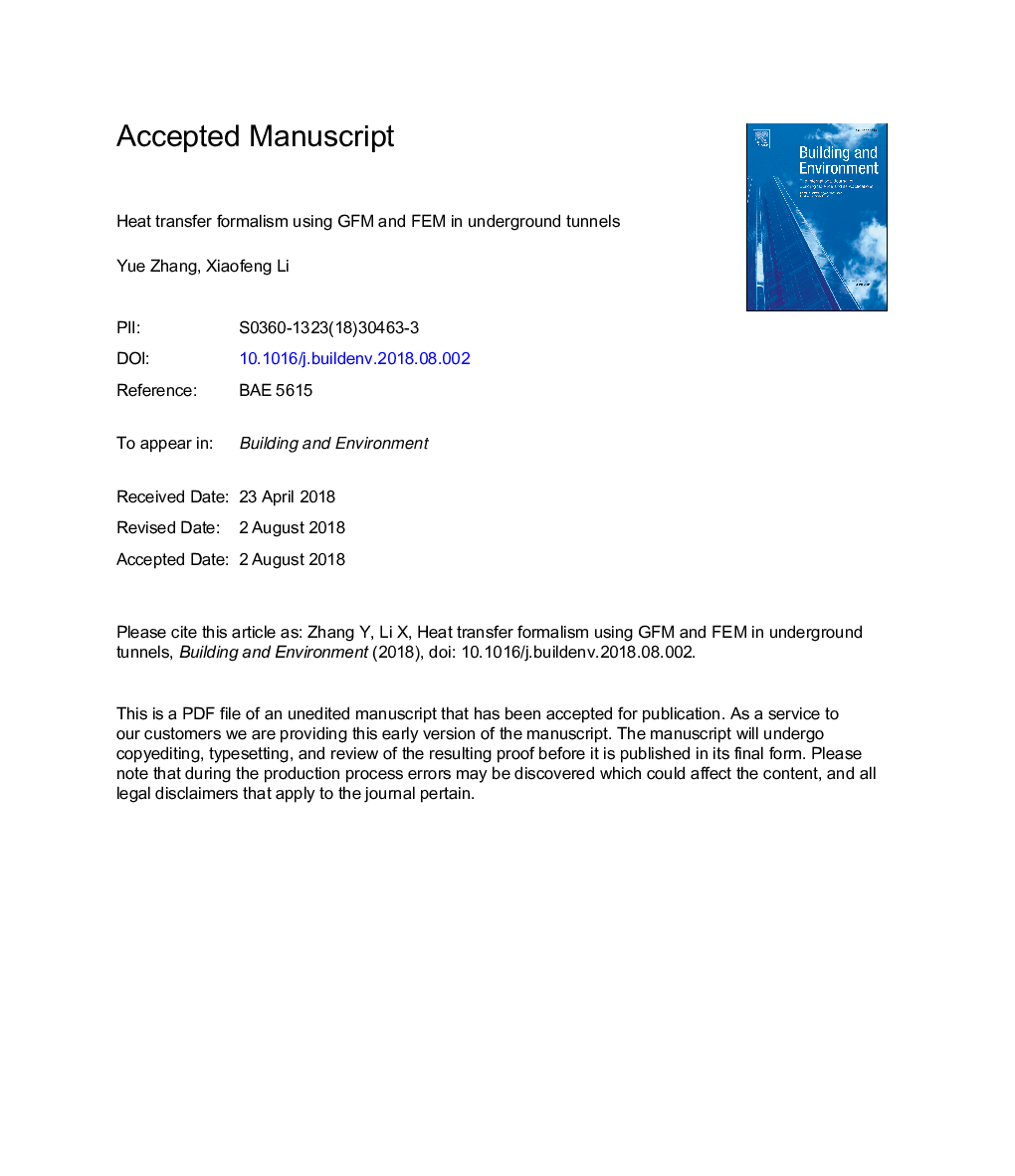| Article ID | Journal | Published Year | Pages | File Type |
|---|---|---|---|---|
| 6696729 | Building and Environment | 2018 | 28 Pages |
Abstract
Underground tunnel temperature is an essential factor that influences both the environment and energy consumption in subways. Therefore, any formalism that addresses underground tunnel temperature is required to take into account the inhomogeneity in the thermal properties of the soil and transition phases in the long-term heat transfer process. In this study, a two-dimensional unsteady heat transfer formalism based on a Green's function method (GFM) and finite element method (FEM) was proposed to consider the realities in underground tunnels. The boundaries in this model were classified into air-soil interface, soil-tunnel interface, and distant boundary. Moreover, a case study was conducted and validated through simulations and experiments. A satisfactory agreement was achieved between the simulation results and field measurement data from Guangzhou Metro Line7 and Line5, which are newly built and 10-year old operational subway lines, respectively. The results from the case study indicate that the proposed formalism has very good prediction capability to describe the subway tunnel temperature under various operation conditions.
Related Topics
Physical Sciences and Engineering
Energy
Renewable Energy, Sustainability and the Environment
Authors
Yue Zhang, Xiaofeng Li,
